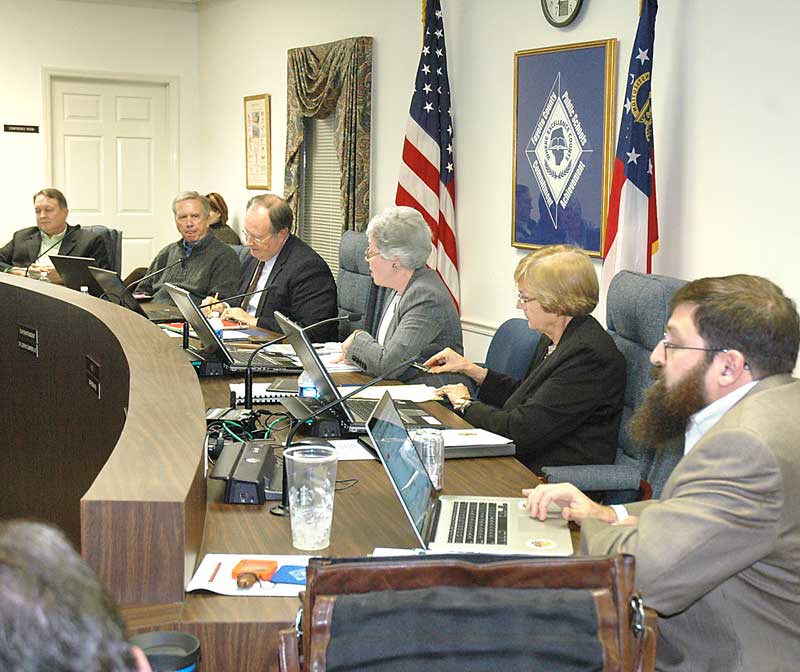The Fayette County Board of Education is nearing the time when a decision will have to be made on which of three operational models will serve the school system in the coming years. The school board will hold a public input meeting at 6 p.m. prior to the March 16 meeting.
Each of Georgia’s school districts has until June 30 to notify the state which model it will operate. Districts can chose to stay as a status quo system, which includes virtually no waivers on issues such as class size, or they can choose to operate as an Investing in Education Excellence (IE2) system or as a charter system.
The IE2 and charter models are called flexibility models to improve students achievement since both provide flexibility in matters involving issues such as expenditure control and class sizes.
The school system in the next week is expected to announce the day and time of the public input meeting.
When it comes to IE2 and charter system contracts with the Ga. Dept. of Education, both are multi-year performance contracts that have two main components.
One component involves academic and other targets to which the school district is committed. The other component deals with waivers granted by the state school board.
Charter system contracts also include a list of innovations that the school district will implement to enable it to meet its higher academic targets and an agreement on the decision-making authority granted to local school governance teams.
In terms of accountability, an IE2 system requires specified minimum academic targets each year for each school, but it does not include a requirement for school-level governance.
Schools demonstrating a trend of improvement and meeting the equivalent of three years of targeted improvement (within the College and Career Ready Performance Index, or CCRPI, academic progress model) by the end of the contract will be deemed as meeting the accountability requirements of the contract.
Schools failing to meet the CCRPI target may receive a “second look” by the state.
IE2 system can receive waivers and must include at least one waiver from a list that includes class size, expenditure control, employee certification or salary schedule requirements.
If one or more schools in an IE2 system at the end of the contract period fails to meet the requirements, that system could 1) be made to revert to a charter system with independent school-level governance and a governance board with strong parent involvement, 2) be operated by a successful school system or 3) be operated by a private entity, whether for profit or nonprofit.
The failure of a school to meet IE2 requirements could also be required to make a variety of other changes and be subject to a number of remedial actions.
The other option the school board can consider adopting is the charter system model.
Under a charter system, student performance goals must meet contract goals and exceed state averages and previous system performance.
Though the charter model includes more local school governance, it remains under the control and management of the school board. The amount of local school governance must meet minimum state requirements.
The charter model requires that the superintendent share his authority with local school governance teams to develop recommendation to the local school board.
Local school governance under a charter system requires that local school governance teams be decision-makers in five areas. Those include recommending the principal/school leader for selection by the school board, having input into the school budget (including recommendations for the number of type of personnel, curriculum, supplies, equipment, maintenance and operation), input into the selection of curriculum and accompanying materials, approval of school improvement goals and oversight and input into school operations that are consistent with school improvement and charter goals.
As it stands now, 49 school systems around the state have been approved as charter systems or have submitted a letter of intent to do so and 24 are approved or have submitted a letter of intent to use the IE2 model. It appears that few, if any, will retain the longstanding model now referred to as “status quo.”
There are other school systems, such as Coweta County, that initially went for the charter system but changed the preference, due to changing criteria, to become an IE2 system.











Leave a Comment
You must be logged in to post a comment.